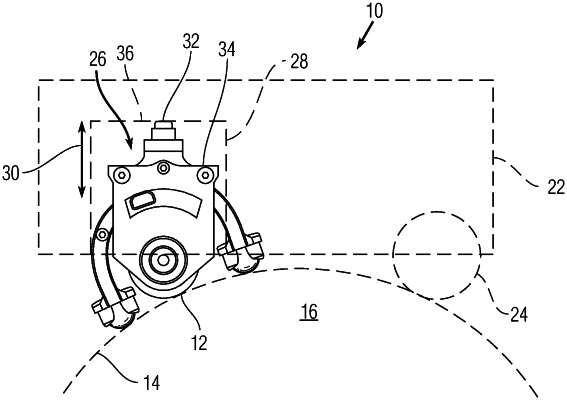| CPC G01N 29/2493 (2013.01) [G01N 29/225 (2013.01); G01N 29/265 (2013.01); G01N 2291/2626 (2013.01)] | 13 Claims |

|
1. An assembly configured to hold a probe adjacent to a test surface, comprising:
a first connector;
a first arm pivotably coupled to the first connector at a first end thereof, the first arm extending in a forward direction and extending in a normal direction perpendicular to the forward direction and normal to the test surface, the first arm configured to pivot with a first degree of freedom in the forward direction;
a second arm pivotably coupled to the first connector at a first end thereof, the second arm extending in a rearward direction opposite to the forward direction and extending in the normal direction, the second arm configured to pivot with the first degree of freedom in the rearward direction;
a pair of first mounting members each coupled to a respective second end of the first and second arms;
a pair of first wheels each coupled to a respective first mounting member; and
a holder monolithically integral with the first connector and configured to hold the probe,
wherein the pivotable coupling of the first and second arms to the first connector passively normalizes a detection direction of the probe as the probe traverses the test surface.
|